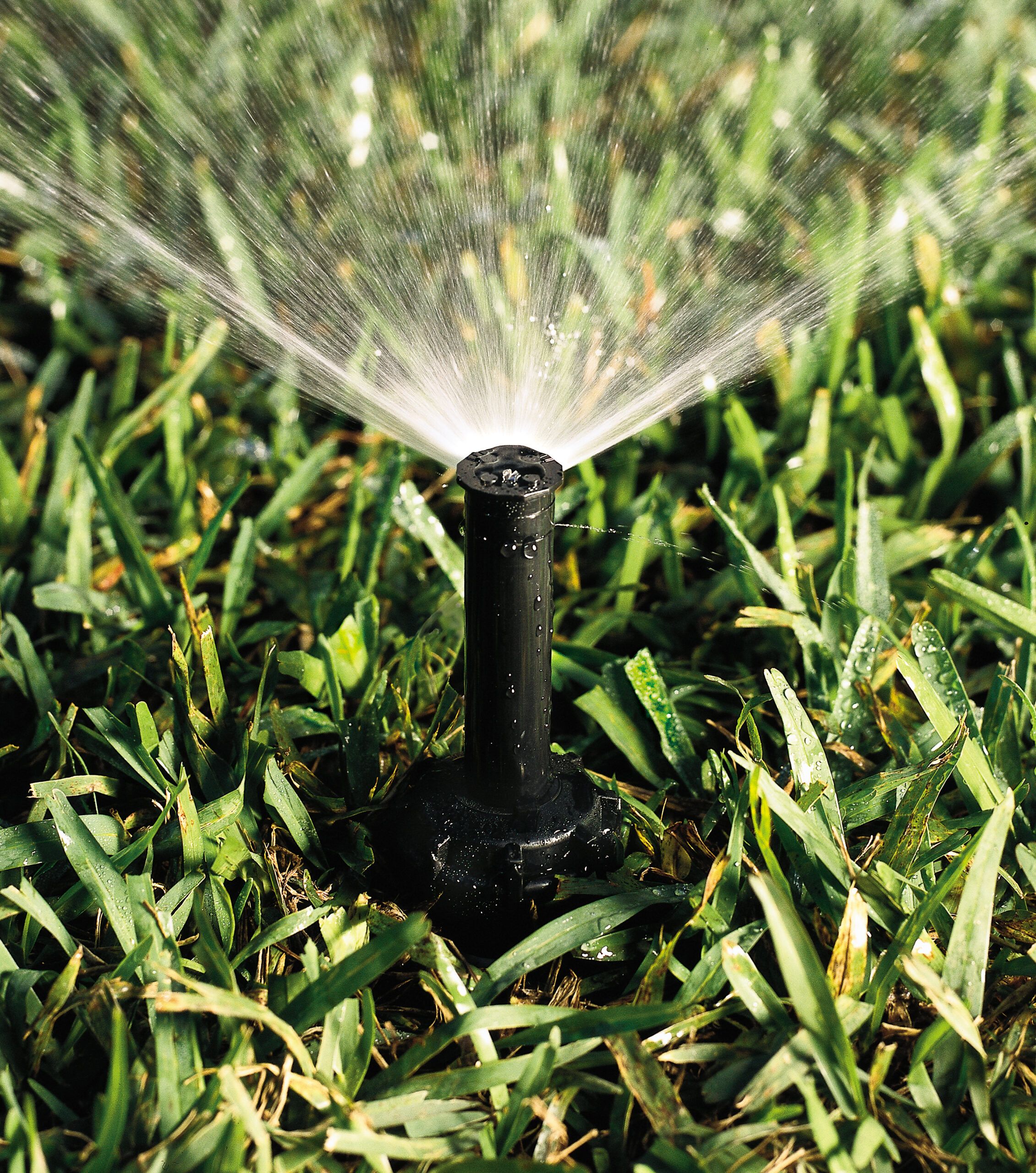Project details
Skill
Cost
Estimated Time
A landscape flush with green grass, healthy trees, and colorful flowers increases a home’s curb appeal. Automatic sprinklers are the best way to maintain such a luxuriant setting while minimizing water use.
Before you can begin your own DIY project, you need a plan. Many manufacturers will custom-design a system for you that is specific to your yard and region of the country.
The manufacturer will supply instructions on how to check your water pressure—typically, you need at least 30 to 35 psi (pounds per square inch) of pressure and about 10 to 13 gpm (gallons per minute) of water flow to support a sprinkler system. They’ll also give you a template so that you can sketch your property boundaries. Send them the sketch and they’ll return a detailed plan for your landscape—including specific instructions—and a list of everything you’ll need to buy at the hardware store to put the system together.
Sprinkler System Installation in 10 Steps
Step 1: In-Ground Sprinkler Overview
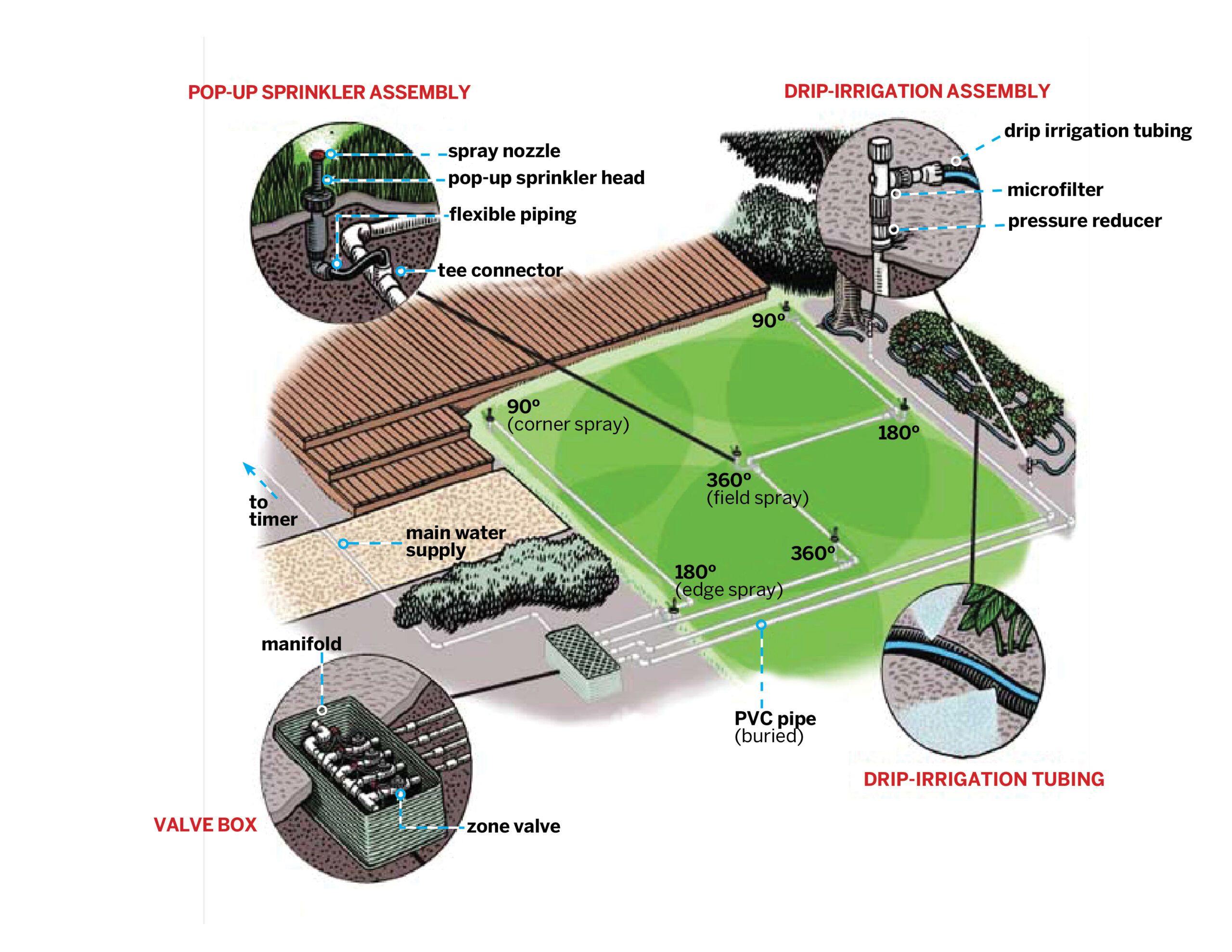
WARNING: Check with the local building department to obtain all necessary permits, and contact a one-call center to have the local utilities mark any buried electrical cables, gas lines, or sewer lines.
Step 2: Dig the Trenches
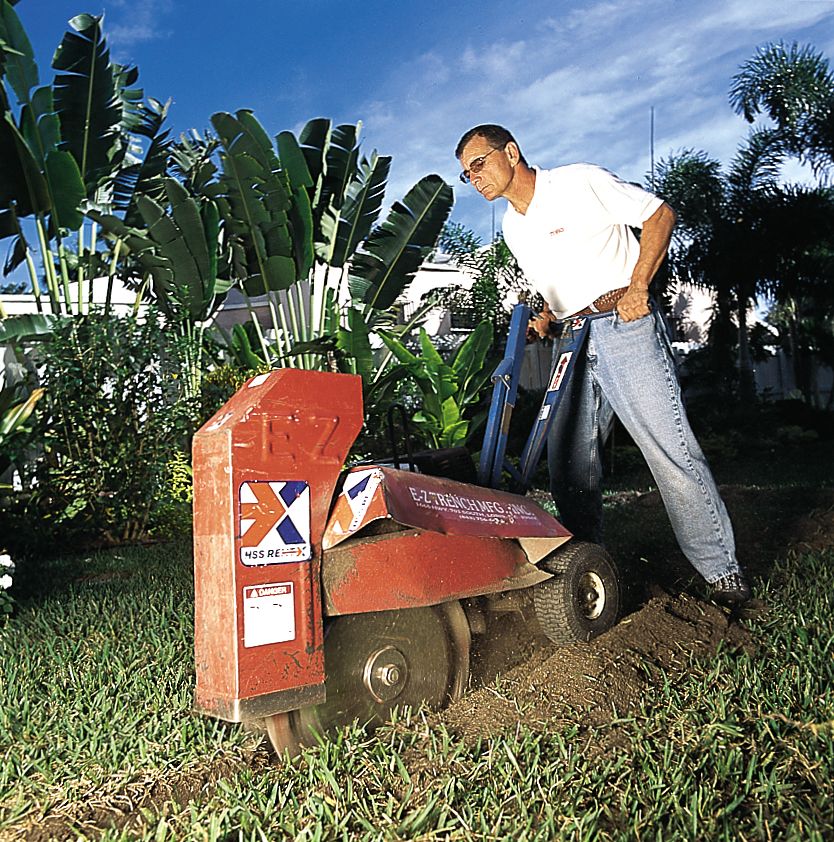
- Locate the pipe for the water source that you’ll be tapping into. It might be at the water meter in the basement or buried underground.
- Mark the locations of all the trenches and sprinklers with wooden stakes or plastic flags.
- Then use a gas-powered trenching machine to excavate the trenches to a depth of 4 to 12 inches, depending on the recommendation for your area of the country.
Tip: Most rental dealers will drop off and pick up the trenching machine for a small additional charge.
Step 3: Make the Water Connection
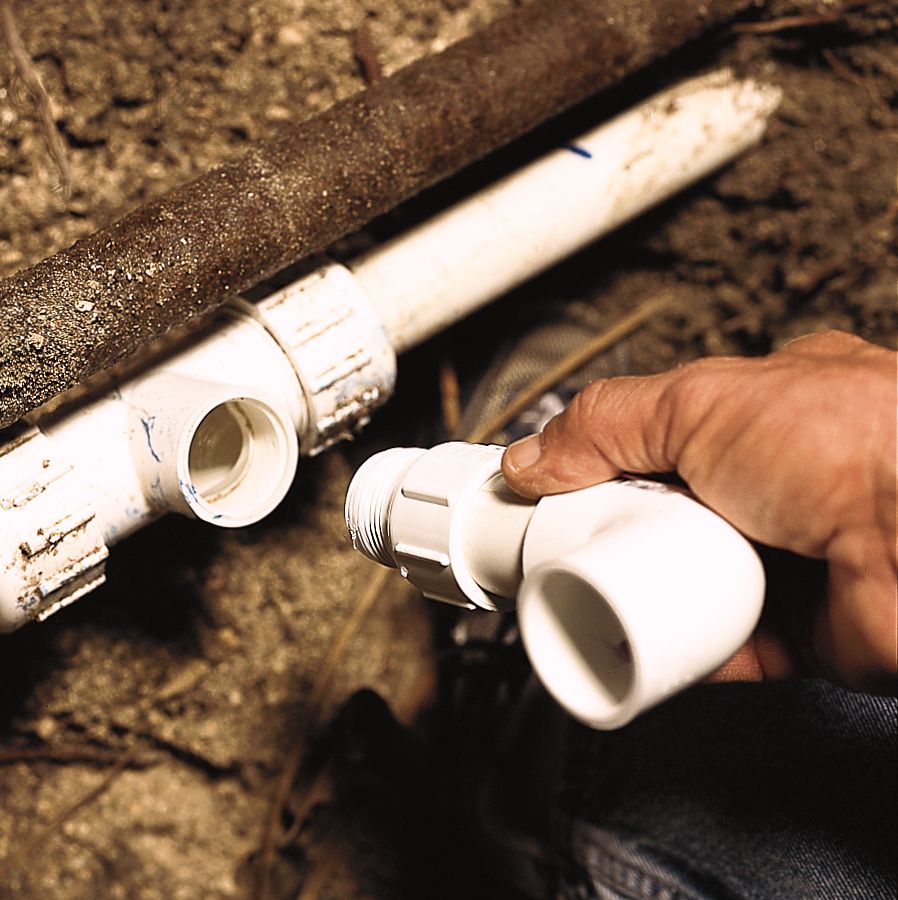
- Turn off the water to the house at the meter.
- Cut into the main water line and splice in a tee fitting with PVC cement and primer. If the line is copper, solder on a copper tee.
- Glue a 90-degree PVC elbow onto a male PVC adapter.
- Thread the adapter into the tee fitting installed on the main water line. It’s okay to connect PVC to copper here.
Tip: If you are uncomfortable with this step, call in a professional plumber to tap into the main line for you.
Step 4: Install the Zone Valves
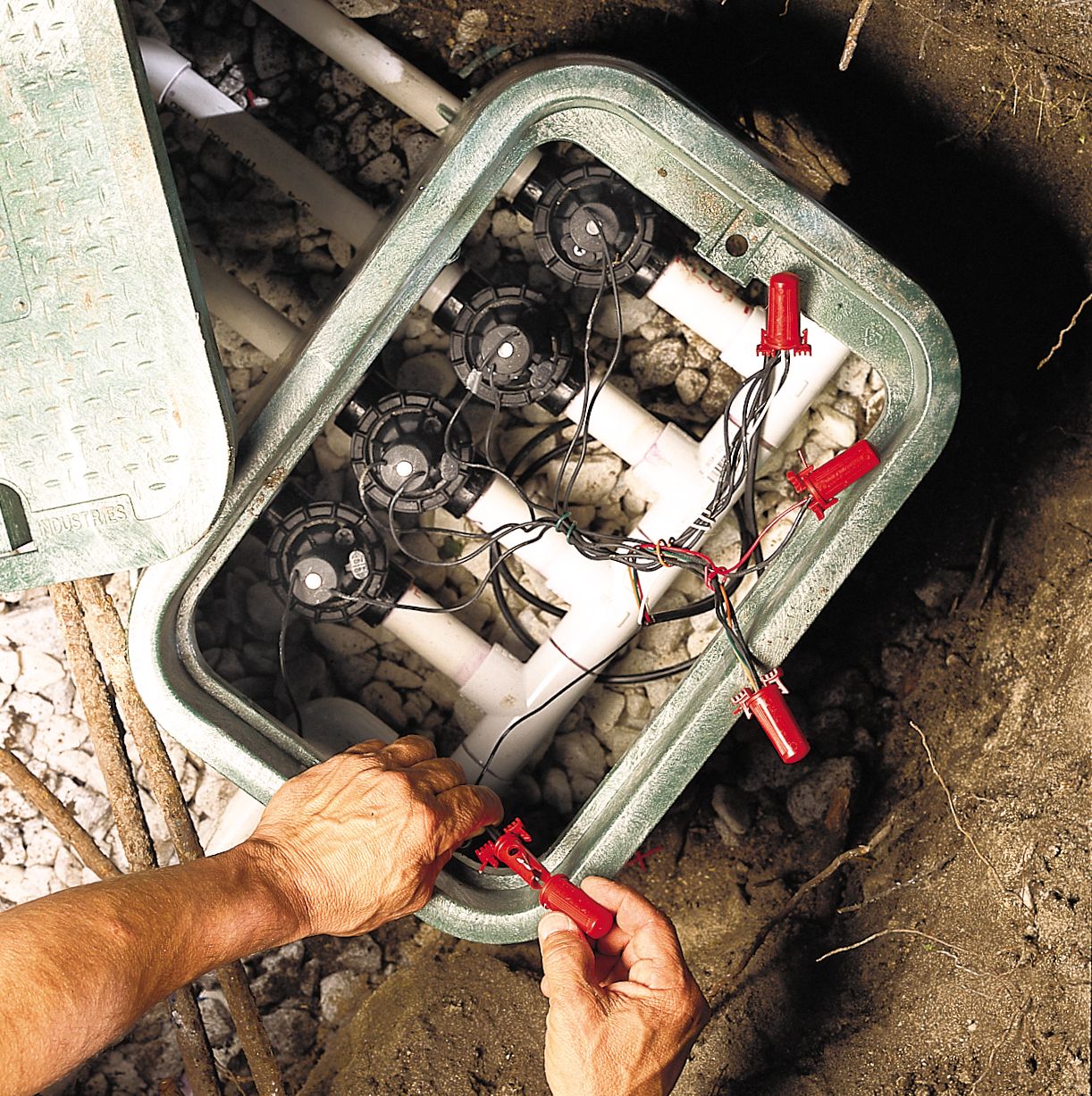
- Dig a trench from the main water line to the valve box location, as indicated on your plan. At the end, dig a hole about 18 inches deep and 2 to 3 feet long.
- Line the hole with 2 inches of gravel, then set the valve box into it. The box lid should be flush with the grass.
- Next, following the manufacturer’s directions, glue together the manifold and attach the zone valves. Set the manifold in the valve box.
- Run 1-inch schedule 40 PVC pipe from the main water line to a backflow-prevention device and then connect it to the manifold.
- Dig a shallow trench from the valve box to the location for the timer, according to your plan.
- Lay the 24-volt underground wire in the trench and connect it to the wires leading from each valve.
Step 5: Place the Pipes in the Trenches
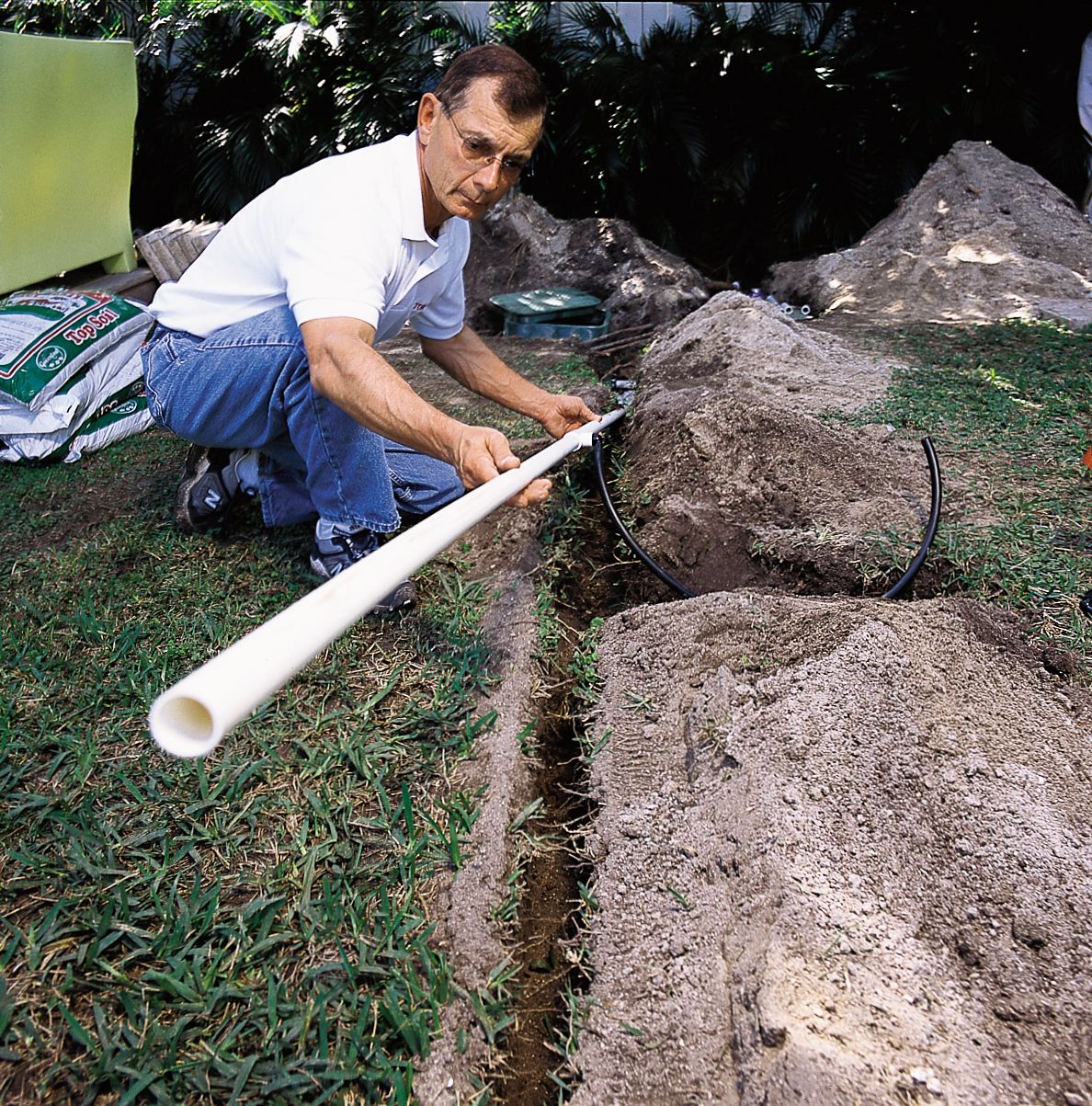
- Following the plan, lay PVC pipe in all the trenches leading from the valve box. If necessary, join pipe sections with couplings and PVC cement.
- Wherever a pipe branches off to a sprinkler head, splice in tee fittings, then attach a short length of flexible piping, which will connect to the sprinkler head.
- Where a pipe connects to drip-irrigation tubing, attach an upturned elbow, a short vertical pipe, and a pressure reducer with a microfilter.
Tip: Save money and avoid extra trips to the home center by buying PVC fittings in multi-piece contractor packs.
Step 6: Connect the Pipe at the Valve Box
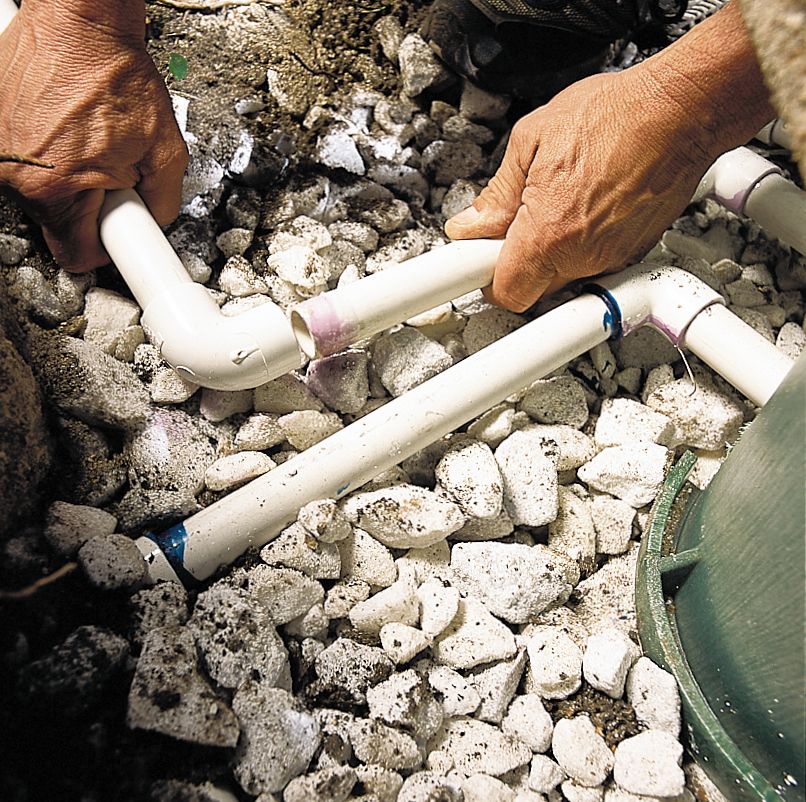
- Use 90-degree elbows to join the PVC water pipes in the trenches to the zone valve pipes protruding from the valve box.
- Once the piping is completed, turn on the water to flush any dirt or debris from the system. Turn the water off again to install the sprinklers.
Step 7: Install the Pop-Up Sprinklers
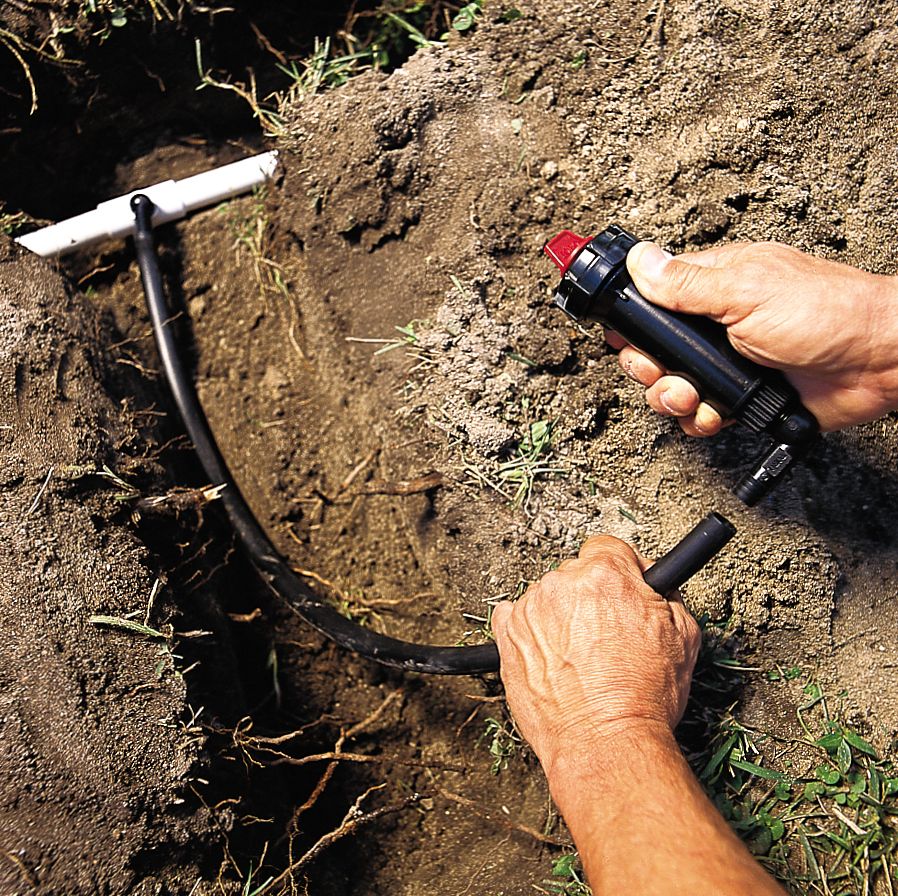
- Attach a pop-up sprinkler onto the end of each length of flexible piping. Push the barbed fitting all the way into the pipe; no glue or hose clamp is needed.
- Remove the cap from the sprinkler and install the appropriate spray nozzle, as indicated on the plan.
Step 8: Roll Out the Irrigation
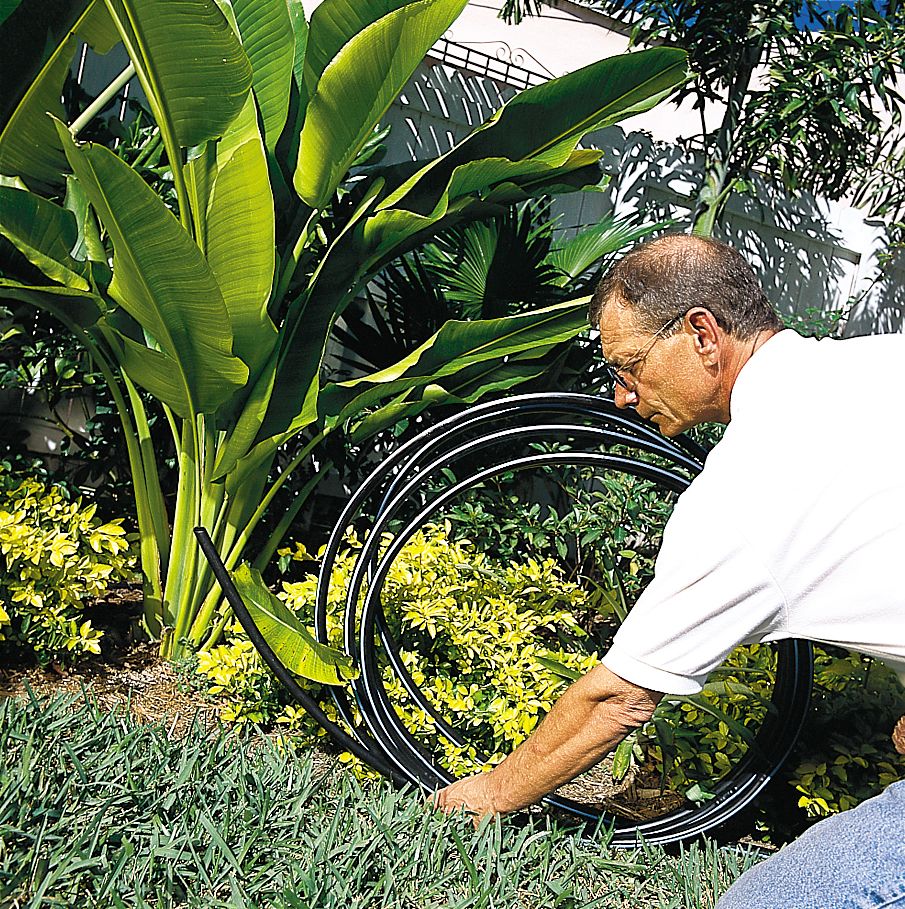
- At flowerbeds and trees, connect drip-irrigation tubing to the pressure reducer and microfilter coming from the underground PVC pipes.
- Roll out the tubing along the flower bed, keeping it close to the base of the plants.
- Keep unwinding the spool back and forth throughout the flower bed; space the tubing 12 inches apart.
- If necessary, join one length of tubing to another with a push-in coupling.
- When you get to the end of the layout, cut the tubing with a utility knife if necessary, flush it with water, fold it over, and slip on an end clamp.
Tip: Set the tubing in the sun for a few hours and it will soften and be much easier to install.
Step 9: Install the Ground Stakes
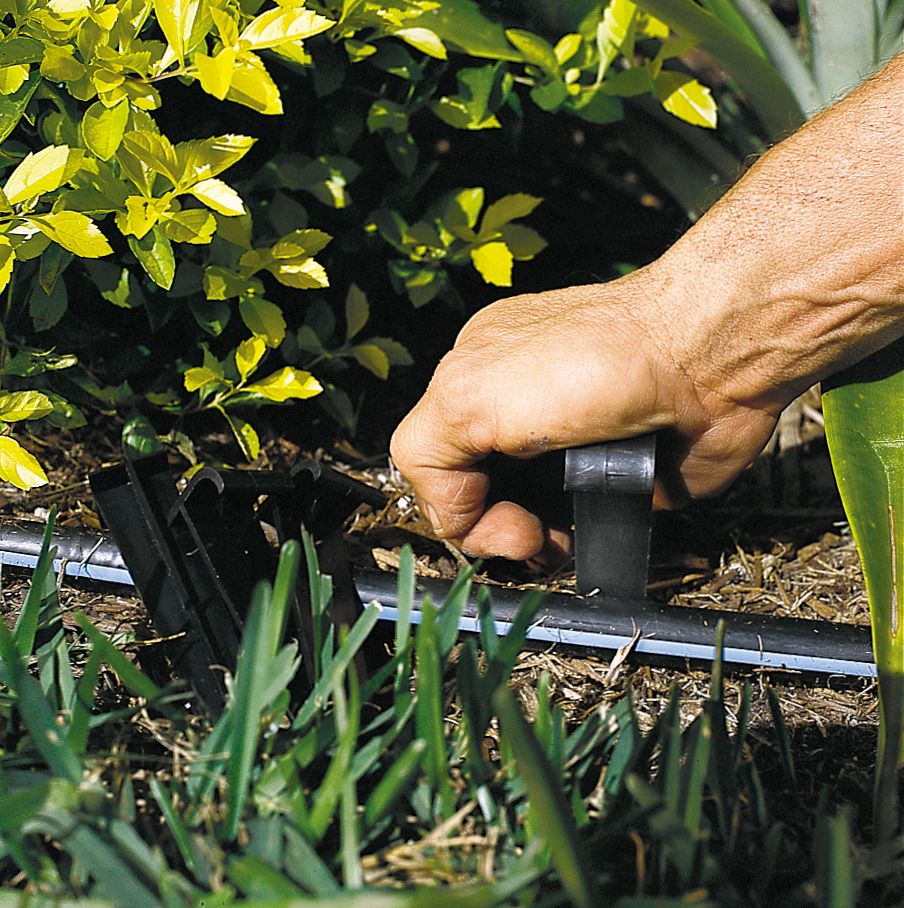
- Once all the irrigation tubing is laid out, secure it with plastic ground stakes. Hook each stake over the tubing and press it into the dirt .
- Space the stakes about 18 to 24 inches apart.
- Note that it’s often necessary to place two stakes very close together and on opposite sides of the tubing to hold it down.
- To prevent the water coming out of the drip-irrigation tubing from evaporating too quickly—and to help hide the tubing—cover the area with bark mulch. Spread it at least 4 inches deep and it will also deter weeds from sprouting.
Step 10: Connect the Timer Wires
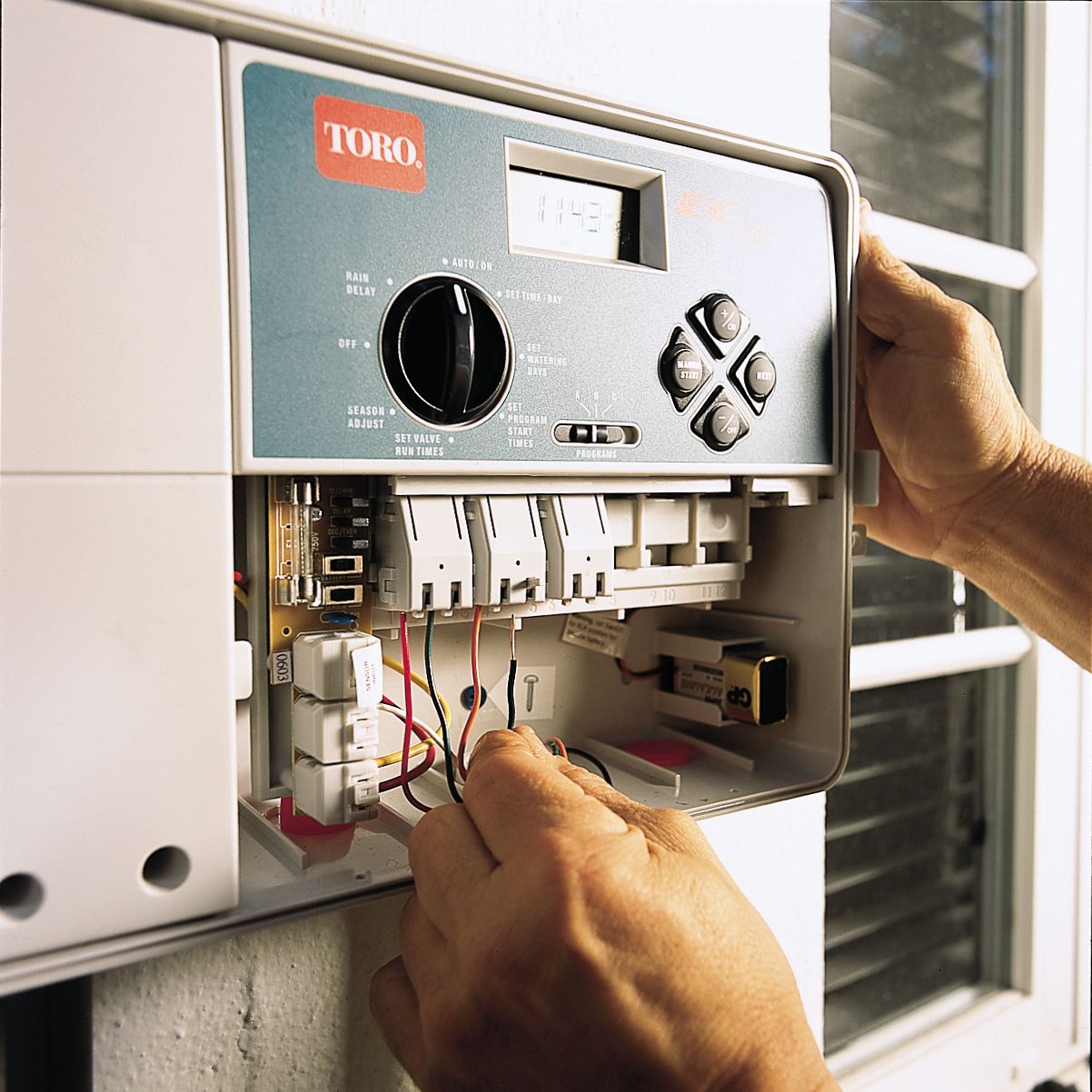
- Mount the programmable timer on the house wall.
- Strip the insulation from the ends of the 24-volt wires that lead from the zone valves to the timer.
- Attach the wires to the timer terminals, as shown in the manufacturer’s instructions.
- Hire a licensed electrician to run power to the timer, if necessary.
- Set the timer and run a test to make sure that each zone and all the sprinklers are operating properly.
- Finally, adjust any nozzles that are spraying off course.
Ready to bring your lawn to the next level? Check out some of our favorite lawn care resources.
- TruGreen Lawn Care Review
- How to Restore a Lawn Full of Weeds
- The Ins and Outs of Hydroseeding
- Summer Lawn Care Tips
Tools
 PVC pipe cutter
PVC pipe cutter Tape measure – 100 foot
Tape measure – 100 foot Trenching shovel
Trenching shovel Trenching machine
Trenching machine Large adjustable pliers
Large adjustable pliers Utility knife
Utility knife Tongue and groove pliers
Tongue and groove pliers Screwdriver
Screwdriver
